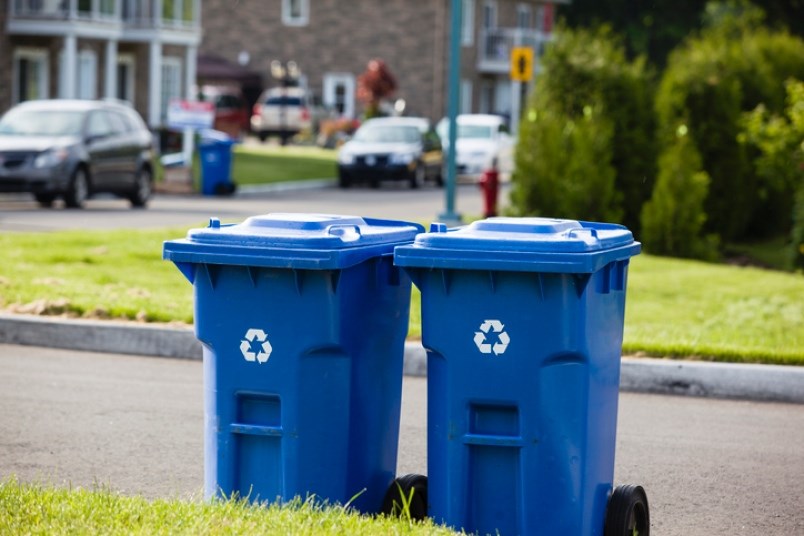COCHRANE— On Monday (July 19), waste and recycling manager Fabrizio Bertolo updated Town Council on the ongoing blue cart audit the Town initiated in October 2020.
Penalties for contaminated loads rose from $100 to $300 beginning in January 2021, potentially adding up to $100,000 per year in fees, which has the potential to impact future service costs and residential rates.
The blue bin audit was undertaken to help the Town educate the public on what materials belong in recycling bins and what does not, and to keep fees for contamination down.
The Town of Cochrane retained the services of Tetra Tech Canada to take on the project at a cost of $35,023.
Tetra Tech inspected a total of 11,928 household blue bins in several neighbourhoods in town in October and November of last year.
Blue bins which had contaminants in them were marked with an educational tag that indicated which contaminant was present, with the intent to educate residents on appropriate recycling materials.
Bertolo told Town Council roughly 24 per cent of households were tagged to indicate that they had contaminants present, and there were some commonly misplaced materials present in many of those blue bins.
“There are lots of different kinds of contamination, but there are three categories, loose plastic bags, bagged recycling and mixed material packaging that represents 80 per cent of the contamination, which is huge,” he said.
A few of the households audited had materials that could have been problematic for the recycling processors, including one bin that contained loose gravel and a slice of pizza.
Bins like that were tagged and also turned 90 degrees to indicate to the blue bin collectors that bin should be left behind.
Bertolo said the educational slip left behind seemed to have the correct affect upon revisiting those households.
“When we did revisit households, we noticed that tagging and turning carts, it did influence an improvement in recycling separation,” he said. “The carts that were first tagged and turned, the second time they were much better.”
Bertolo said he felt the project was a success, as the educational tags left on carts seemed to have the desired effect, and residents seemed to respond positively to the auditors during their checks.
“Giving a heads up to residents and explaining why we're doing this made the project really successful. We didn’t have any pushback— We didn’t have any complaints. Residents were going out when they saw the checkers checking their blue carts, but not for complaining, to ask questions, ‘hey, what should I do with this, what should I do with that?’” he said. “They took the opportunity to ask questions and that was exactly what we were doing out there.”
Bertolo recommended that the Town keep up its educational communication with residents on appropriate recycling procedure, continue to refuse bins that are heavily contaminated, conduct future spot-checking studies and focus on reducing the most common contaminants found in the bins.




